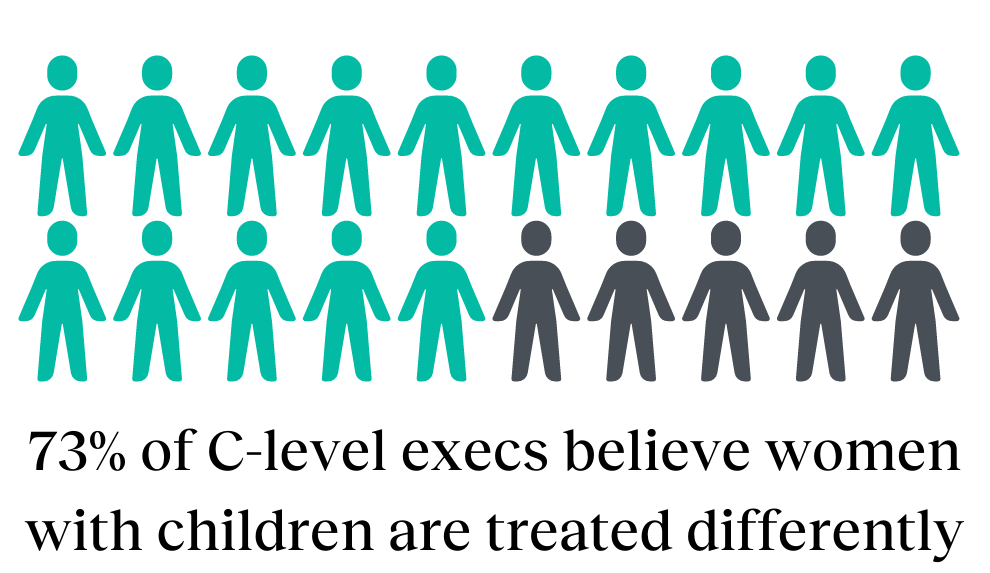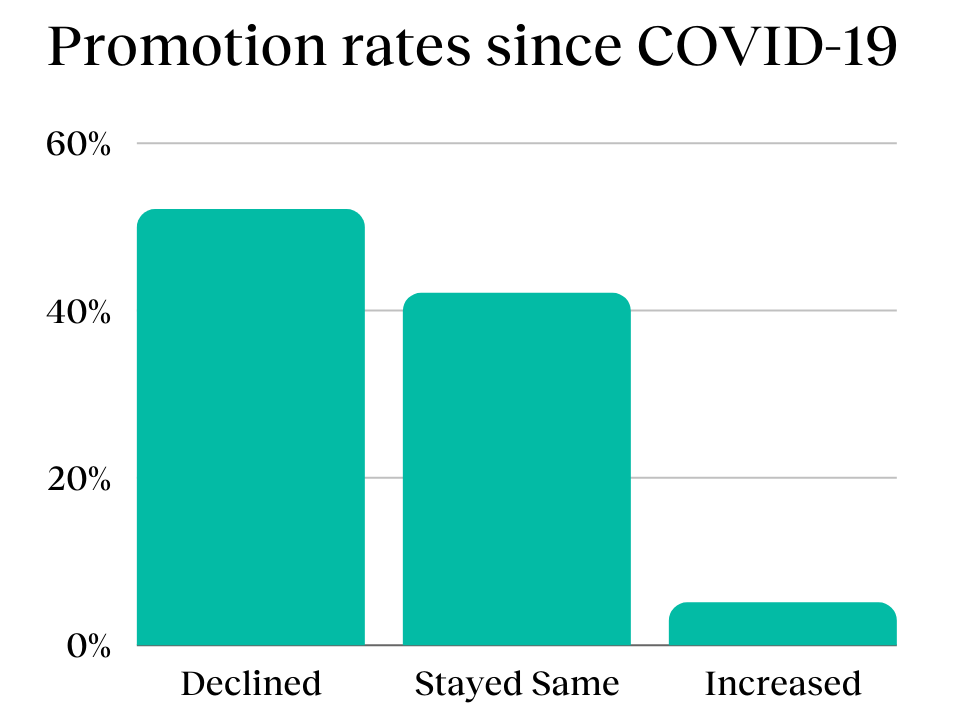Women are at a crossroads on the path to workplace gender equality. For the first time in almost a decade, they hold the majority of jobs in the U.S., according to the Bureau of Labor Statistics. At the same time, women are experiencing gains in leadership positions as expectations change around mothers placing their careers on hold while raising children.
The pandemic could put those gains in jeopardy, as working women have been disproportionately affected by the changes of the past year. To shed light on how the pandemic has exacerbated challenges faced by women in the workplace, Lattice and Censuswide partnered up to conduct a survey of 500 HR and people management leaders. Here’s what we found:
1. Working mothers have had to cut hours.
The role of primary caregiver has evolved as on-demand services like meal subscriptions and telehealthcare make it easier to offload time-consuming household tasks. But women still provide the majority of caregiving for children and the elderly, and the pandemic has only made it harder for them to do so.
Seventy-nine percent of our survey respondents have seen women take time off or reduce their hours to help with homeschooling and childcare — roughly 20% more than the number of those who have seen men who have done the same. The challenges that increased caregiving demands pose for women include:
- Financial strain due to reduced work hours
- Extended time out of the workforce
- Early retirement along with lower retirement savings
- Caregiving expenses (hospital visits, medical equipment, etc.)
In addition, almost 45% of respondents said they believe women with children are treated differently at their company. This number jumps to 73% among C-level respondents, which suggests that women in leadership positions particularly feel the effects of caregiving on their professional lives.

Action Item: Refresh Your Benefits
So how can organizations work to support women as working parents and caregivers? For starters, businesses should take the time to understand the challenges and stressors that women are dealing with in the workplace. The best way to do this is by removing the guesswork and engaging with women directly. Consider conducting a companywide engagement survey to gauge their general wellbeing and find out how women would like to be supported.
Employers can use these insights to adjust or refresh their policies and benefits in a way that mitigates the stressful effects of caregiving on female employees in particular. In response to engagement survey feedback, many businesses are beginning to implement flexible schedules, childcare stipends, college savings plans, and “baby cash” for new parents, among other changes that cater to working moms during the pandemic. As women’s labor force participation continues to grow, workplace support programs like this will be an essential part of how businesses support women in balancing professional and caregiving responsibilities.
2. Mentorship programs are struggling.
Mentorship programs are an important part of retention and growth for female employees. Women who are mentored are less likely to be let go and more likely to be promoted, which makes mentorship a valuable resource for them in the workforce.
The pandemic has made continuity a challenge across organizations, and female mentorship programs are no exception. While nearly 68% of survey respondents said they have female mentoring programs in place at their company, 83% said that mentor relationships have been more difficult to sustain during COVID-19. Lack of consistent mentorship could be detrimental to career progression for women in most workplaces.

It’s also worth noting that only 55% of middle management respondents said their company has a female mentorship program in place, as opposed to 75% of C-level executives and 97% of business owners. Could this discrepancy signal that mentorship programs are on leadership’s radar but haven’t been communicated to all levels in the organization? How can companies ensure that managers are aware of mentorship resources available to their female direct reports?
Action Item: Overcommunicate
The key to staying connected with your employees in times of crisis is to overcommunicate about resources and programs that are in place to support them.
- Business leaders and mentors can emphasize to women that they are available to lend help and guidance, even in a virtual environment.
- HR teams can share regular COVID-19 updates in addition to specific updates for workplace issues that directly impact caregivers.
- To prevent burnout and stress, managers can redefine performance review criteria and share these changes with their direct reports or even consider setting criteria together.
Companies should outline exactly how they plan to turn their commitments into action and follow-through on promises of support. Taking an empathetic and consistent approach to supporting women will go a long way in maintaining vital relationships within your company.
3. Promotions have slowed since the pandemic.
Since the start of the pandemic, promotion rates have slowed down or stagnated for both women and men. More than half of the respondents in our survey reported seeing a decline in promotions for all employees since the beginning of the pandemic, and 42% of them said it stayed the same.

Among business owners, however, only 30% of respondents felt promotion rates had gone down, with 14% believing they actually accelerated. To create opportunities for advancement, it’s important that leadership is on the same page as the rest of the organization about employee experience.
Action Item: Foster Transparency
It’s understandable that promotions aren’t feasible for a lot of businesses at this moment, but it’s still important for employees to know their growth hasn’t been forgotten because of the pandemic. Managers can help employees, especially women, feel confident and secure by surfacing actionable development plans and providing transparency on company performance.

Of the respondents we surveyed, 86% of companies believe they offer a clear path for career growth for women. However, 25% fewer respondents at smaller companies believe this to be the case than at mid-sized or large companies. It makes sense that career trajectories are less defined at small businesses that are still establishing their organizational structure, but prioritizing female mobility in the early stages of their development will only benefit them down the road.
—
Companies have a responsibility to support female employees with growth opportunities — when these are limited, women should know what to expect moving forward. Since the start of the pandemic, women have struggled to balance caregiving responsibilities, maintain a connection with their mentors, and find clarity on their career trajectories as promotions have been put on hold. By being aware of these problems, business leaders can be proactive in helping women navigate this difficult period and ultimately succeed at work.








